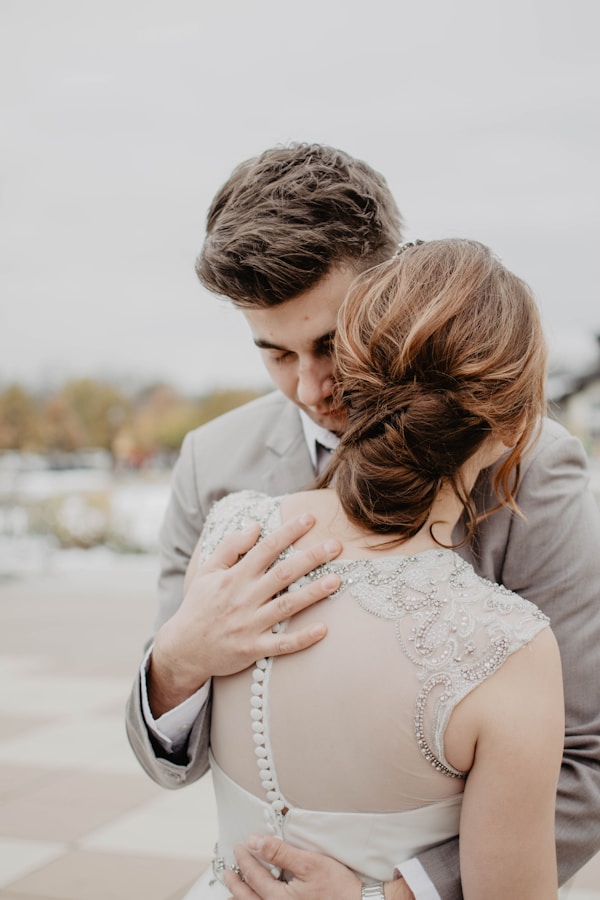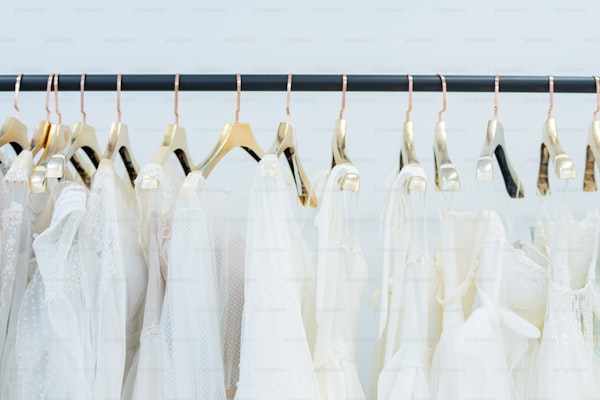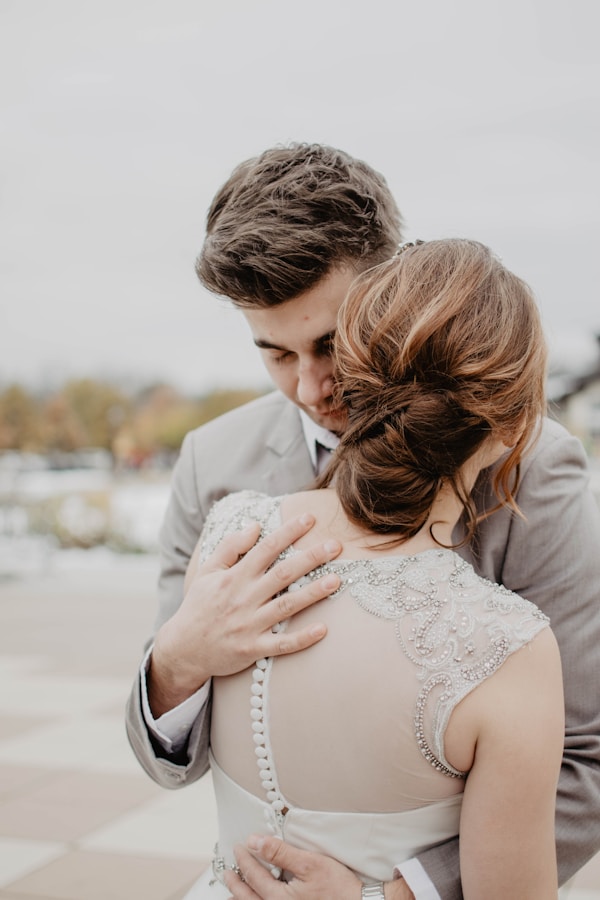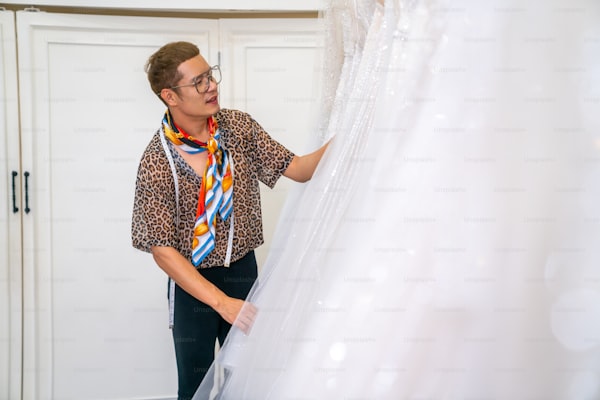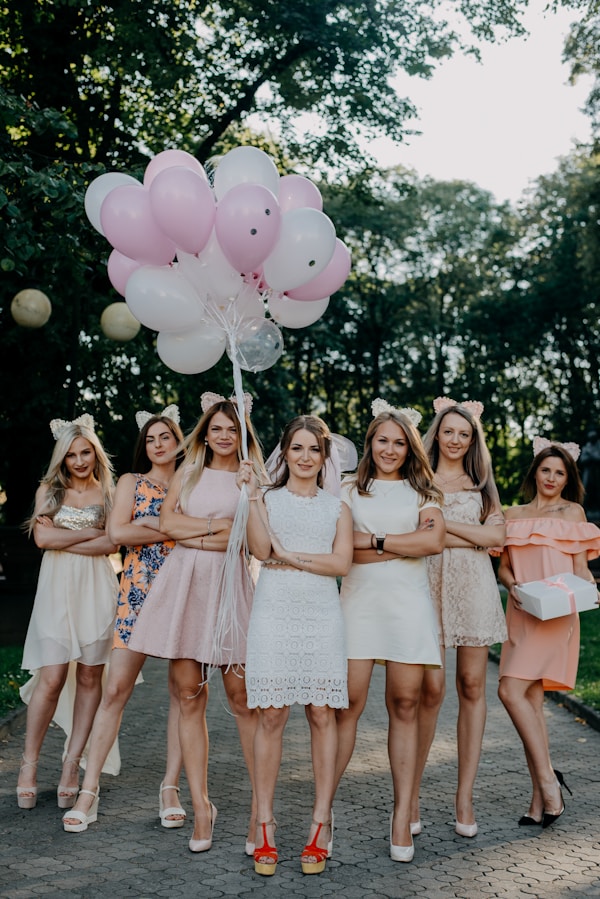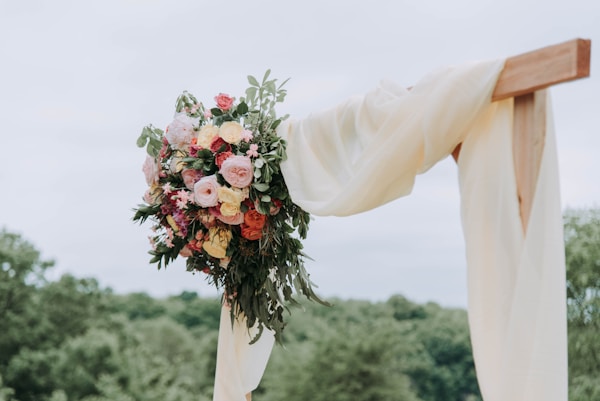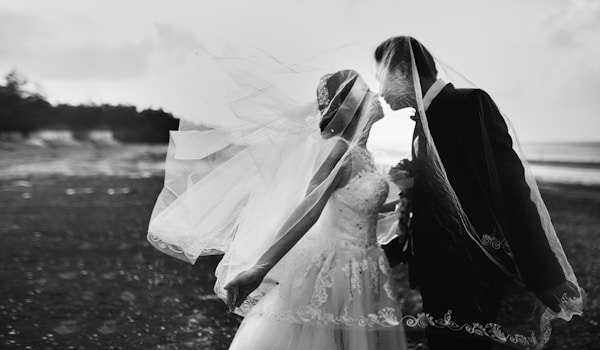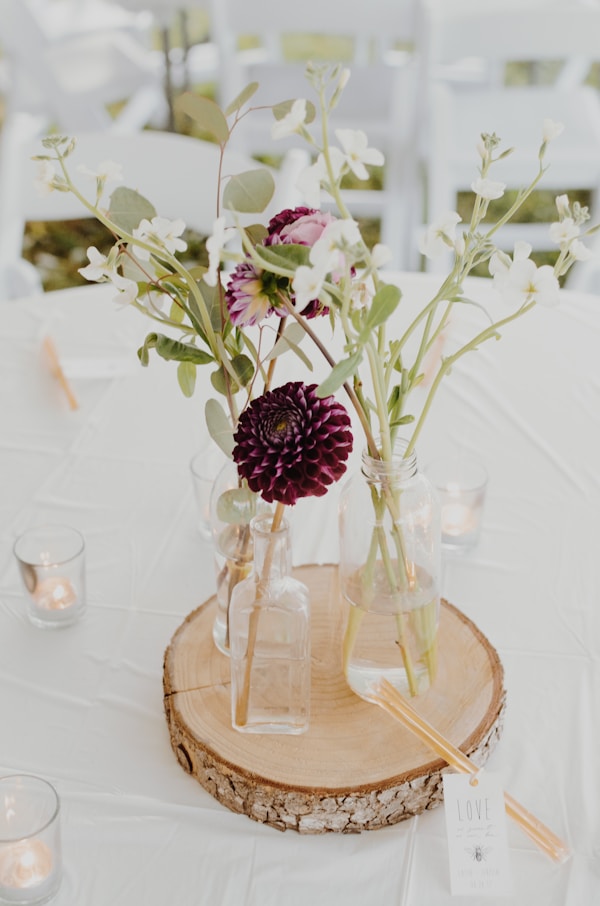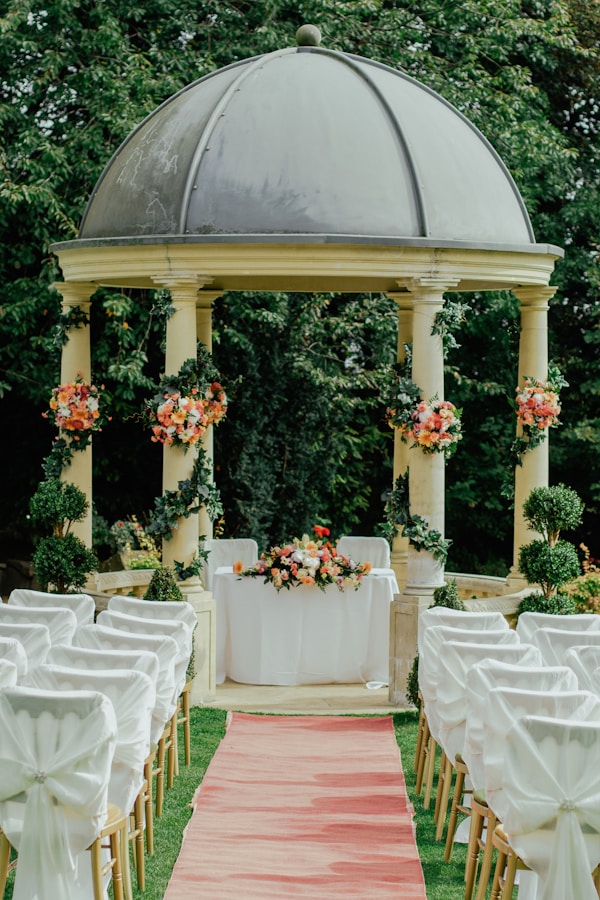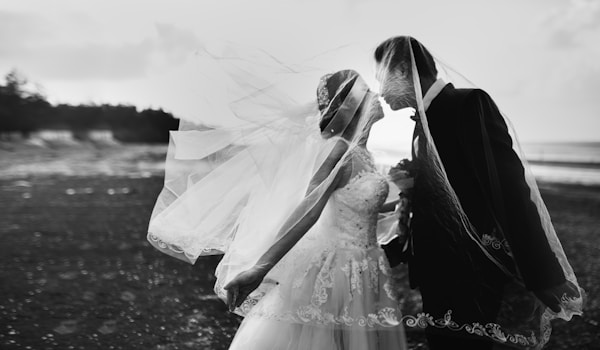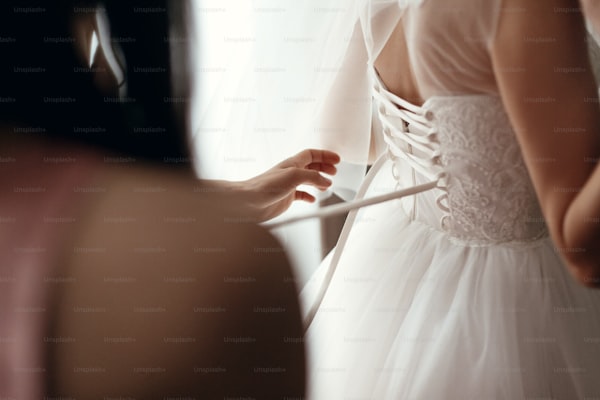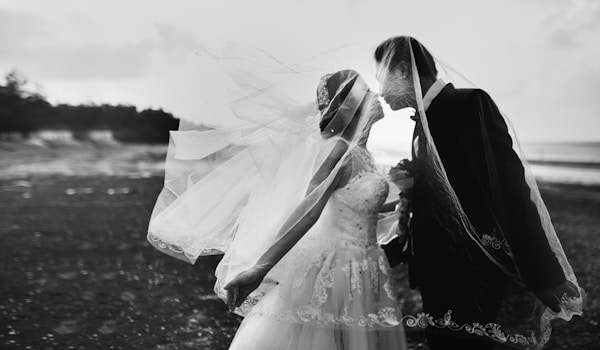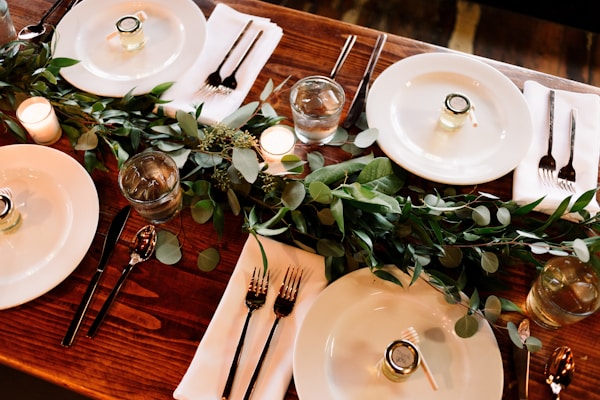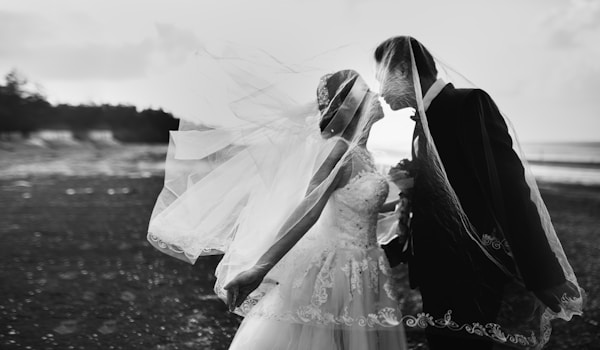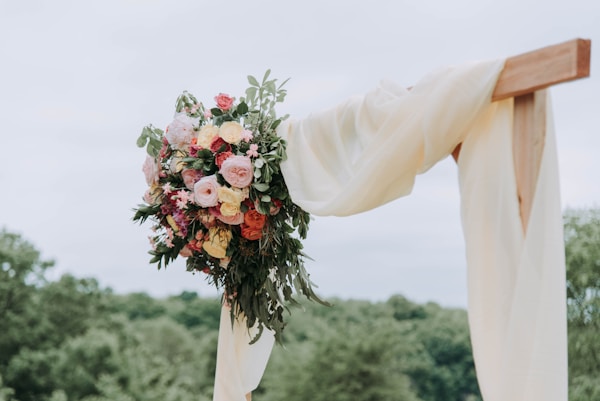Creating the Perfect Wedding Dress: The Art of Combining Lace and Satin
How Do You Design a Wedding Dress with Both Lace and Satin Elements?Designing a wedding dress that elegantly incorporates both lace and satin elements is a journey that requires creativity, understanding of materials, and knowledge of current fashion trends. The contrast between the delicate feel of lace and the luxurious appearance of satin can create a stunning ensemble that appeals to every bride's aesthetic dreams. This article will guide you through the process of designing a wedding dress that beautifully marries these two exquisite fabrics.Understanding Lace and Satin: Characteristics and UsesBefore diving into the design process, it’s essential to understand the characteristics of lace and satin. Here are some key points to consider:MaterialCharacteristicsLaceDelicate, intricate patterns; often sheer; adds texture and elegance.SatinSmooth, glossy finish; heavier drape; offers a luxurious feel; adds structure.Choosing the Right Types of Lace and Satin for Your DesignWhen it comes to designing a wedding dress, the choice of lace and satin is crucial. Lace can vary widely in texture, pattern, and weight. Options include:Chantilly Lace: Soft and delicate, perfect for romantic designs.Venise Lace: Heavier and more structured, ideal for detailed embroidery.Alençon Lace: A combination of floral motifs with embroidered edges, adding sophistication.For satin, consider the following types:Duchess Satin: A heavier option that provides structure and support.Charmeuse Satin: Light...
Exploring the Craftsmanship: What Methods Are Used to Create a Wedding Dress with a High Collar?
In recent years, the trend of wedding dresses has evolved, with brides increasingly opting for elegant designs that feature distinctive elements. One such design is the wedding dress with a high collar, which combines sophistication with vintage charm. This article delves into the various methods used to create these stunning garments, highlighting their unique attributes and offering insights into the craftsmanship involved.Understanding High Collar Wedding DressesA high collar wedding dress typically draws inspiration from vintage styles, including Victorian and Edwardian fashion. These dresses are characterized by their elegant necklines that rise above the collarbone, often enhancing the overall silhouette. Creating such dresses involves a combination of traditional sewing techniques, innovative fabric choices, and meticulous attention to detail.Key Methods in Creating High Collar Wedding DressesDesigning a wedding dress with a high collar requires a careful selection of fabrics, patterns, and sewing techniques. Below are some of the most common methods employed in this intricate process:MethodDescription1. Fabric SelectionThe foundation of any wedding dress is its fabric. Popular choices for high collar dresses include satin, silk, lace, and tulle. The choice of fabric impacts the dress's silhouette and overall look.2. Pattern MakingCreating a high collar design starts with drafting the right patterns. The collar must be proportionate to the rest of the dress, and design...
Mastering Alterations for a Wedding Dress with Layers of Organza
Understanding Organza Layers in Wedding DressesWhen it comes to planning a wedding, choosing the perfect dress can be both exciting and daunting. One of the most elegant fabrics used in wedding dresses is organza, known for its sheer quality and ability to add volume to the gown. However, with its beauty comes challenges, especially when it comes to alterations. In this article, we will explore how to effectively handle alterations for a wedding dress with layers of organza, ensuring your big day is as perfect as you envision.1. Why Choose Organza for Your Wedding Dress?Organza is a lightweight, sheer fabric that is stiffer than many other materials, allowing it to hold shapes beautifully. It is available in a variety of colors, though traditional white or ivory is most popular for weddings. The fabric’s translucent quality adds a touch of ethereal beauty and elegance, making it the top choice for many brides. Here are some key advantages:Advantages of OrganzaLightweight and comfortableElegant drapingDurable and long-lastingAvailable in various colors2. Preparing for AlterationsBefore you embark on the process of altering your wedding dress, it’s important to prepare adequately. Here are several steps you should consider:2.1 Find a Skilled SeamstressWhen dealing with organza, it’s crucial to find a seamstress with experience in handling delicate fabrics. A skilled professional can make the necessary adjustments without compromising the integrity of the fabric.2.2 Schedule Alt...
Techniques for Creating Stunning Wedding Dresses with Cinched Waists
Understanding Cinched Waists in Wedding Dress DesignWhen it comes to wedding dresses, the silhouette can make all the difference. Among the various styles, dresses with a cinched waist stand out for their ability to highlight the bride’s figure. But what exactly are the techniques used to create this chic and elegant look? In this article, we will explore the craftsmanship behind wedding dresses with cinched waists, offering insights into design techniques, materials, and styling tips that can help you achieve the perfect bridal gown.1. The Importance of the Cinched WaistA cinched waist not only flatters the bride's figure but also adds an element of sophistication to the gown. This feature can create an hourglass shape, enhancing curves and providing a more tailored appearance. For many brides, this silhouette symbolizes elegance and romanticism, making it a top choice for weddings.2. Techniques Used to Create a Cinched WaistDesigning a wedding dress with a cinched waist requires a combination of tailored construction, strategic draping, and the right fabric choices. Let’s delve into the techniques that designers commonly use:2.1 Draping and Pattern MakingDraping is a crucial technique that involves arranging the fabric on a dress form to create the desired silhouette. Designers often use muslin fabric to experiment with various styles and cuts before finalizing the pattern. This technique allows for adjustments in how the fabric flows and how the waist is cinched. The goal ...
How to Ensure the Fabric of a Wedding Dress Stays Smooth During Sewing: Tips and Techniques
IntroductionSewing a wedding dress is a beautiful yet challenging process. To create a stunning gown, you must maintain the fabric's smoothness during the sewing process. In this article, we will explore effective techniques and essential tips to ensure that the fabric of a wedding dress stays smooth throughout the sewing process, enhancing its overall beauty and quality.Why Is Fabric Smoothness Important in Wedding Dress Sewing?The smoothness of the fabric is crucial when sewing a wedding dress for several reasons: Visual Appeal: A smooth fabric ensures that the wedding dress looks elegant and expensive. Construction Integrity: Smooth fabric helps in achieving precise seams and hems. Comfort: A well-sewn dress allows the bride to move freely without irritation.Types of Wedding Dress FabricsWhen sewing a wedding dress, it’s essential to recognize the types of fabrics typically used:Fabric TypeCharacteristicsSatinLuxurious, smooth finish, may slip easily.TulleLightweight, delicate, can be challenging to handle.LaceIntricate patterns, requires careful handling.OrganzaStiff, holds shape well but can fray.Tips for Keeping Fabric Smooth During SewingMaintaining the smoothness of your fabric is attainable with these practical tips:1. Choose the Right ToolsHaving the correct sewing tools can significantly impact the smoothness of your wedding dress fabric. Invest in a high-quality sewing machine with adjustable tension, sharp needles appropriate for your chosen fabric, and ...
Achieving the Perfect Fit: Methods for a Wedding Dress with a Low Back
The Quest for Perfection: Low-Back Wedding DressesChoosing the perfect wedding dress is one of the most exciting aspects of wedding planning. For many brides, a dress with a low back embodies elegance and romance. However, achieving the perfect fit for such a design can be a challenge. This article will explore various methods to ensure your low-back wedding dress fits flawlessly. We will delve into tailoring techniques, different types of fabrics, and tips for accessorizing, while also addressing common concerns brides may have.Understanding the Importance of FitThe fit of your wedding dress can significantly impact your overall look and comfort on this special day. A low-back design creates a stunning visual appeal but can often lead to issues such as sliding straps, gaping fabric, or discomfort. To achieve the desired look without compromising comfort, various methods can be employed. Let's explore these in greater detail!1. Choose the Right FabricOne of the most crucial factors in achieving a perfect fit is the fabric used in the dress. Fabrics with some elasticity can help the dress hug your curves better, while structured fabrics can provide support. Here are some popular choices:Fabric TypeCharacteristicsBest ForSilkLuxurious, soft, and drapes beautifullyClassic stylesChiffonLightweight, airy, and flexibleRomantic designsTulleStructured, adds volume, and has a whimsical feelBall gownsStretch SatinElasticity provides comfort and a snug fitContemporary silhouettes2. Tail...
Designing an Easy-to-Travel Wedding Dress: A Comprehensive Guide
Introduction: The Ultimate Challenge of Travel-Friendly Wedding DressesPlanning a wedding is often a whirlwind of emotions, excitement, and, importantly, logistics. One major consideration that brides face, especially those getting married in a destination location, is the design of a wedding dress that is easy to travel with. How do you design a wedding dress that is both stylish and practical? In this article, we will explore innovative design elements, fabrics, and tips that make traveling with your dream gown stress-free.The Importance of Travel-Friendly Wedding DressesWhen you're planning a wedding, especially if it involves travel, the practicality of your wedding dress can't be overlooked. Traveling with a heavy, bulky gown can be cumbersome and stressful. You want a dress that looks beautiful in photos but also withstands the rigors of travel. Here’s why focusing on a travel-friendly wedding dress is vital: Convenience: A lightweight and manageable dress is easy to carry, whether it’s in the car or on a plane. Preservation: Travel-friendly gowns are less likely to wrinkle or get damaged during transit. Comfort: A dress designed for movement can enhance your overall comfort on your big day, especially in outdoor settings.Key Factors in Designing a Travel-Friendly Wedding DressHere are several crucial factors to consider when designing a wedding dress that is easy to transport:1. Fabric SelectionThe choice of fabric significantly impacts the dress's transportab...
Discover the Art of Creating a Wedding Dress with a Detachable Skirt
Unlock the Magic of Detachable Skirts in Wedding DressesWedding dresses come in a myriad of styles, designs, and fabrics, allowing modern brides to express their individuality on one of the most important days of their lives. One of the trending elements in bridal fashion is the detachable skirt, which offers versatility and style. This article dives deep into the techniques used to create stunning wedding dresses with detachable skirts, exploring the craftsmanship that makes each piece unique.Understanding Detachable SkirtsDetachable skirts add a layer of flexibility for brides, allowing them to transform their look throughout their wedding day. A bride can start with a dramatic look for the ceremony and then transition into something lighter for the reception. But how exactly are these designs achieved? Let’s take a closer look at the techniques involved in creating such innovative dresses.1. Fabric SelectionThe first step in crafting a wedding dress with a detachable skirt is the careful selection of fabrics. Different materials can dramatically affect both the design and the comfort of the dress. Common fabrics include: Fabric Characteristics Satin Shiny, smooth, and luxurious feel; often used for its elegance. Tulle Lightweight, airy, and often used for volume and layers. Lace Delicate and intricate; adds texture and romantic touch. Mikado A blend of silk and nylon; provides structure while remaining soft.A skilled designer will select fabric based on the desir...
Ensuring Perfect Alignment of Lace Patterns on Your Wedding Dress
How to Ensure Lace Patterns Align Properly on a Wedding DressYour wedding dress is one of the most significant pieces of clothing you will ever wear, and getting the details right is essential. Among these details, lace patterns play a pivotal role in the overall aesthetic of your gown. Misalignment of lace patterns can easily detract from the beauty and elegance of the dress, so it's crucial to pay attention to this aspect during the design and fitting process.Understanding Lace PatternsLace, with its intricate designs and delicate appearance, can add a touch of sophistication and romance to a wedding dress. However, the complexity of lace patterns means that careful thought is needed to ensure they align properly.Types of Lace PatternsBefore discussing the alignment, it's essential to understand the different types of lace patterns you might encounter:Chantilly Lace: Known for its delicate floral motifs on a fine net background.Alençon Lace: Characterized by floral designs outlined with fine threads.Venise Lace: Solid and usually heavier, often used for appliqués.Bridal Lace: Specifically designed for wedding dresses with intricate details.The Importance of AlignmentAligning lace patterns properly is vital for creating a visually pleasing and harmonious look. Misaligned patterns can create an asymmetric appearance that appears unintentional. Additionally, properly aligned lace can help create a more flattering silhouette on the bride, emphasizing her figure and enhancing th...
What Methods Are Used to Create a Wedding Dress with Hand-Stitched Details?
IntroductionWedding dresses are not just garments; they are symbols of love, commitment, and dreams. The elegance of a hand-stitched wedding dress elevates its beauty, showcasing intricate details that machine-made gowns simply can't replicate. In this article, we delve into the various methods used to create these stunning wedding dresses with hand-stitched details, emphasizing both the artistry involved and the practical aspects of this timeless craft.The Art of Hand-StitchingHand-stitching is a meticulous process that requires not only skill but also patience and a keen eye for detail. Each stitch—whether it be a delicate lace appliqué or a vibrant embroidery—adds character and charm to the dress. To understand the methods used in creating these beautiful gowns, let’s explore the main types of hand-stitching techniques.1. EmbroideryEmbroidery involves decorating fabric using needle and thread. This technique can add a stunning visual element to a wedding dress. Here are some common types of embroidery used: Machine Embroidery: While technically not hand-stitched, machine embroidery can serve as a base for further hand detailing. Silk Thread Embroidery: Luxurious and smooth, silk threads create a subtle sheen. Crewel Embroidery: Known for its bold designs and textures, crewel embroidery can be used creatively on wedding dresses.Incorporating these designs can harmonize with the overall aesthetic of the gown, making it more personalized.2. BeadworkBeadwork transform...
How to Manage the Weight of a Heavily Embellished Wedding Dress
The Beauty and Challenge of Heavily Embellished Wedding DressesWedding dresses have long been a pivotal element in bridal fashion. Among the plethora of styles available, heavily embellished wedding dresses stand out due to their ornate details and eye-catching designs. However, with beauty often comes challenges, and one of the most significant challenges brides face is the weight of these stunning gowns. In this article, we will explore effective ways to manage the weight of a heavily embellished wedding dress to ensure comfort and enjoyment on your big day.Understanding the Weight of Your Wedding DressBefore diving into solutions, it’s essential to understand why embellished wedding dresses can be so heavy. Common elements that add weight include: Beading: Rows of crystals, pearls, and other embellishments that can significantly add to the overall weight. Lace and Fabric: Layering different types of fabric can also contribute to heft. Linings: Some dresses have multiple linings for structure and support, which increases weight.Practical Tips to Manage Your Dress WeightManaging the weight of your heavily embellished wedding dress involves a combination of smart choices, preparation, and awareness of comfort. Here are several strategies to help you navigate this challenge:1. Choose the Right FabricThe fabric you choose can greatly impact the weight of your dress. Lighter materials like chiffon, tulle, or organza can be used with embellishments to keep the overall weight d...
Mastering Wedding Dress Fitting Adjustments with a Corset Bodice
Introduction to Wedding Dress Fitting with Corset BodicePlanning a wedding is an exhilarating yet demanding journey, especially when it comes to choosing the perfect wedding dress. For brides opting for a corset bodice, the fitting process can present unique challenges that require careful adjustments to ensure a flawless silhouette. In this article, we will explore how to handle fitting adjustments for a wedding dress with a corset bodice, addressing common questions and concerns brides may have during the fitting process.Understanding the Corset BodiceA corset bodice is designed to sculpt the body and provide support, often creating a stunning hourglass figure. This style typically features laces or hooks at the back, allowing for customizable fitting. However, the intricacies of corset bodices mean that adjustments might be necessary to achieve the perfect fit. Here’s what you need to know.Common Fitting IssuesWhen trying on a wedding dress with a corset bodice, brides often encounter various fitting issues. While some are standard fitting concerns, others are specific to the corset style. Here are a few common problems: Too Loose or Too Tight: Adjustments may be necessary if the corset is either too loose or too tight, affecting the overall comfort of the dress. Uneven Height: If the bodice isn't even, it can lead to an unflattering appearance. Cup Size Issues: Finding the right cup size is crucial for comfort and overall look. Common Fitting Issues Possibl...
Unveiling the Artistry: Techniques Behind Asymmetrical Lace Appliqué Wedding Dresses
A Journey into the World of Asymmetrical Lace Appliqué Wedding DressesWedding dresses are a timeless symbol of elegance and love, and in recent years, asymmetric lace appliqué has emerged as a favored choice among brides seeking a unique and modern twist on traditional designs. Asymmetrical designs not only lend themselves to innovative aesthetics but also highlight the bride’s individuality. In this article, we'll explore the various techniques involved in creating wedding dresses featuring asymmetrical lace appliqué, delve into the creative process, and consider some stunning visual options you might want to explore for your special day.Understanding Asymmetrical Lace AppliquéLace appliqué refers to the delicate technique of sewing lace pieces onto the fabric of the dress to create texture, depth, and elaborate designs. When applied asymmetrically, these lace details can draw the eye in delightful ways and add a contemporary flair, earning their place as one of the most sought-after features in bridal fashion.The Techniques Behind Creating Asymmetrical Lace Appliqué Wedding DressesCreating a wedding dress with asymmetrical lace appliqué involves a diverse range of techniques that bring the designer's vision to life. Below, we'll examine some of the primary techniques used in this artistic process:TechniqueDescription1. Design DevelopmentThe first step in creating an asymmetrical lace appliqué wedding dress is the design phase, where sketching and digital modeling help visua...
Designing a Flattering Wedding Dress for Different Heights: A Comprehensive Guide
Understanding the Essentials of Wedding Dress DesignWhen it comes to the most important day of your life, choosing the perfect wedding dress is a priority for many brides. One crucial question arises: How do you design a wedding dress that is flattering for different heights? In this article, we will explore the intricacies of wedding dress design tailored to various body heights, ensuring every bride feels radiant on her special day.Why Height Matters in Wedding Dress DesignBrides come in a myriad of shapes and sizes. Height plays a significant role in determining which styles will enhance a bride's figure and makeup a stunning silhouette.Understanding proportions is vital. A dress that fits well and complements the bride's height can elevate her overall appearance and create lasting memories that are captured in photos forever.The Impact of Different Heights on Dress DesignHeightFlattering Dress StylesTips for AccessorizingPetite (Under 5'4")A-line, Empire waist, Short dressesChoose delicate accessories, avoid heavy fabricsAverage (5'4" - 5'7")Ball gowns, Fit and flare, Tea-length dressesMid-sized accessories, varied hemlinesTall (Over 5'7")Column dresses, Mermaid styles, Long flowing gownsBold accessories, long veilsDesigning for Petite BridesFor brides under 5'4", the main goal is to create an illusion of height. A-line dresses and empire waist designs work wonders as they elongate the figure without overwhelming it. Here are some expert tips to consider:A-line Silhouette...
Exploring Techniques for Custom Embroidery on Wedding Dresses
Weddings are a celebration of love and individuality, and for many brides, a wedding dress is the centerpiece of this special day. One of the most beautiful ways to personalize a wedding dress is through custom embroidery. This article will delve into the various methods used to add custom embroidery to wedding dresses, ensuring your gown reflects your unique style and story. We will also explore related questions that brides often consider when thinking about embroidery on their special day.Understanding Custom Embroidery Custom embroidery involves stitching designs onto fabric using thread. This technique can transform a simple wedding dress into a stunning work of art. Not only does it add a personal touch, but it can also incorporate meaningful motifs, colors, and patterns that resonate with the bride’s personality. Below, we explore some popular methods used for adding custom embroidery to wedding dresses. 1. Hand Embroidery Hand embroidery is a time-honored method that involves manually stitching designs onto fabric. This technique is often favored for its meticulous detail and ability to create intricate patterns. The advantages of hand embroidery include: Uniqueness: Each piece is one-of-a-kind, as no two stitches are identical. Artistic Control: Brides can work closely with an artisan to customize every detail. Quality: Hand-stitched embroidery is often more durable than machine-made alternatives. However, it is important to note that hand embroidery can be time-c...
Effective Strategies to Prevent Fraying in Delicate Fabrics for Wedding Dresses
Understanding the Importance of Preventing Fraying in Wedding Dress FabricsWedding dresses are not just garments; they are the embodiment of dreams and lifelong memories. The choice of delicate fabrics, such as silk, chiffon, and lace, is essential for creating the ethereal look brides desire. However, these fabrics are often prone to fraying, which can jeopardize the beauty and integrity of the dress. This article will delve into strategies on how do you prevent fraying in delicate fabrics used for wedding dresses, ensuring your dress remains as stunning as the day it was made.The Causes of Fraying in Delicate FabricsUnderstanding why fraying occurs in delicate fabrics is crucial for prevention. Fraying can be attributed to several factors: Fabric Type: Natural fibers like silk tend to fray more than synthetic blends. Cutting Techniques: Improper cutting techniques can lead to frayed edges. Wear and Tear: Regular movement can cause stress on seams and edges, leading to fraying.Preventive Measures Against FrayingHere are some effective strategies to prevent fraying in delicate fabrics used for wedding dresses:1. Choose the Right FabricsSelect fabrics that are less prone to fraying. For example, polyester blends can provide a delicate look with added durability compared to pure silk.2. Use Proper Cutting TechniquesWhen cutting fabric, use sharp fabric scissors and consider methods like: Cutting with the grain to minimize stress. Using a rotary cutter for smooth edges...
Exploring the Considerations for Creating a Wedding Dress with Detachable Elements
Designing a wedding dress is a complex yet exhilarating process that embodies a bride's unique personality and vision. Among various styles, dresses with detachable elements have gained immense popularity in recent years. This design not only offers versatility but also functional features for the big day. In this article, we'll take a closer look at the considerations for creating a wedding dress with detachable elements, ensuring that you make the best choices for your special day.Understanding Detachable Elements in Wedding DressesDetachable elements can include sleeves, trains, or overlays that can be removed or added during the wedding ceremony or reception, allowing the bride to transform her look effortlessly. This feature gives a bride the freedom to change her appearance without needing a complete wardrobe change. However, creating such a dress involves several crucial considerations.1. Fabric ChoicesThe choice of fabric is vital when designing a wedding dress with detachable elements. It’s important that the fabric is not only beautiful but also conducive to alterations and additions. Some popular fabric choices include:Fabric TypeAdvantagesSatinSleek and elegant, perfect for creating smooth detachable elements.OrganzaLightweight and sheer, ideal for layers and soft overlays.LaceRomantic and classic, can be used as a detachable overlay for a vintage look.2. Design ConsiderationsWhen creating a wedding dress with detachable elements, it’s essential to consider design...
Designing the Perfect Wedding Dress: A Reflection of Style and Theme
Understanding the Essence of Wedding Dress DesignWhen it comes to one of the most important days in a person's life, the wedding dress serves as a focal point that encapsulates the bride's personality, style, and the overall theme of the wedding. In this article, we delve into the intricate process of designing a wedding dress that harmonizes both the bride's unique style and the chosen wedding theme.Factors to Consider When Designing a Wedding DressTo create a wedding dress that truly reflects the bride's identity while complementing the wedding theme, several factors must be taken into account:1. The Bride's Personal StyleThe first step in the design process is understanding the bride's personal style. Does she lean towards classic elegance, bohemian chic, or modern minimalism? Identifying her preferred aesthetics is crucial for ensuring that the dress resonates with her individuality.2. Wedding Theme and VenueThe theme of the wedding plays an instrumental role in shaping the design of the dress. Is the wedding set in a rustic barn, a beachside paradise, or a luxurious ballroom? Each venue brings its own flavor, and the wedding dress must reflect that ambiance. For example, a flowing chiffon gown may suit a beach wedding, while a structured ball gown complements a formal affair.3. Seasonal ConsiderationsThe season in which the wedding takes place influences fabric choices and design details. Lighter fabrics like lace and tulle may be ideal for spring and summer weddings, wh...
Mastering Wedding Dress Design: Techniques for a Structured Bodice and Flowy Skirt
The journey of designing a wedding dress that marries a structured bodice with a flowy skirt is both an art and a science. In this article, we will explore various techniques and elements that come into play when creating a wedding dress that achieves this harmonious blend. Whether you're a designer, a bride-to-be, or simply someone interested in the fashion world, understanding these techniques can offer valuable insights into wedding dress fashion.Understanding the Structure and FlowBefore diving deep into the techniques used in constructing a wedding dress, it's essential to define what we mean by a structured bodice and a flowy skirt.What is a Structured Bodice?A structured bodice refers to the fitted upper part of the dress that provides support and shape. It typically includes various stitching techniques and fabrics that help maintain its form. This structure is crucial in ensuring that the dress flatters the wearer and provides comfort throughout the wedding day.What is a Flowy Skirt?A flowy skirt, on the other hand, is characterized by its lightweight fabric that moves gracefully as the bride walks. It enhances the romantic aspect of wedding attire, creating an ethereal look. The skirt should beautifully contrast with the firmness of the bodice while ensuring ease of movement.Techniques for a Structured BodiceCreating a structured bodice requires a combination of construction techniques and material selection. Here are some of the most effective techniques:TechniqueD...
How to Ensure a Perfect Fit for a Halter Neckline Wedding Dress
IntroductionYour wedding day is one of the most important events in your life, and selecting the right wedding dress is crucial for achieving that dream look. One of the popular styles brides are opting for is the halter neckline. However, ensuring a perfect fit for a wedding dress with a halter neckline can pose its own challenges. In this article, we will provide you with essential tips and tricks on how you can achieve a flawless fit for your halter neck wedding dress.Understanding the Halter NecklineA halter neckline is designed to highlight a bride's shoulders and collarbone, making it an elegant and sophisticated choice. However, it requires careful consideration when it comes to fitting, as the design emphasizes the upper body. Here are some aspects to keep in mind:AspectDetailsBody Type CompatibilityThe halter neckline suits various body types, but it particularly flatters those with toned shoulders.Support and StructureMake sure the dress provides adequate support around the bust area without compromising comfort.Strap AdjustmentThe straps should fit snugly without digging into your skin, allowing for movement.Choosing the Right SizeTo ensure that your halter neckline wedding dress fits perfectly, it is crucial to start with the right size. Here are some steps to help you with the sizing:1. Know Your MeasurementsTake accurate measurements of your bust, waist, and hips. Don't forget to include the height measurement, especially if you plan to wear heels. Knowing your ...
